Coming in 2023: SwipeSense Rounding Monitor
Purposeful hourly rounding is a cost-effective strategy that reduces patient harm and increases patient satisfaction.
Regular, routine check-ins by nursing staff have been consistently proven to decrease falls, pressure injuries, and call light usage, while simultaneously increasing patient satisfaction scores. A systematic review of 16 published articles found that hourly rounding led to a 57% median reduction in patient falls and a 54% median reduction in call light usage. An article published in the American Journal of Nursing noted a 14% decrease in skin breakdown and pressure injuries when hourly or bihourly rounds were instituted across 27 nursing units in 14 hospitals.
Despite solid evidence, many hospitals find it difficult to successfully implement and sustain regular rounding by nursing staff. Fortunately, technology can help.
SwipeSense Rounding Monitor Empowers Frontline Staff
With the SwipeSense Predictive Rounding Monitor, frontline nursing staff can adapt their workflows in real-time to ensure rounds are completed on-time. SwipeSense’s technology detects employees’ presence via electronic badges that clip behind their name tags, allowing the system to unobtrusively track rounding behavior. The Rounding Monitor displays this information to clinical staff in an easily accessible format.
A dashboard shows each patient room, a timestamp indicating the last staff visit, and the amount of time that has elapsed since the room was rounded. Rooms that have been visited recently are color-coded green; these rooms are good to go. Rooms that are soon due for hourly rounding appear in orange. Any rooms that haven’t been checked in more than an hour are shown in red.
Nursing staff can quickly glance at the monitor to see which patient rooms are due for rounding. If needed, they can adjust their workflow and check Room 120, which is overdue for rounding, before delivering requested ice chips to Room 155.
Prevent Harm with Actionable Data
The more time that has elapsed since a patient has been visited by nursing staff, the more opportunity there is for harm to befall that patient. A weak, unsteady elderly patient who hasn’t been seen in nearly two hours is more likely to attempt to get up independently and try walking to the bathroom alone than one who was helped to the bathroom just 30 minutes ago. Consistent hourly rounding allows staff to proactively meet many patient needs, decreasing the likelihood that patients will experience harm.
Safety tools that indicate risk and proactively deliver actionable information are most effective in preventing harm. The SwipeSense Rounding Monitor delivers concrete, actionable information in real-time to those who can intervene.
A Staff-Friendly Approach to Rounding
Staff buy-in is essential to the success of hourly rounding. In hospitals where hourly rounding initiatives have failed (or failed to deliver desired results), the lack of success is often attributable to the lack of involvement of frontline staff. As noted by the author of a 2015 Nursing article examining the effectiveness of hourly rounding, “the active involvement of…frontline staff in program design and as unit champion…was critical to significantly reducing in-patient falls rates.”
The SwipeSense Rounding Monitor is designed to meet the needs of frontline staff. Data is delivered directly to nursing staff so they don’t have to hunt for it. And nurses and nursing assistants can use the data to work together as a highly effective team.
One of the challenges of hourly rounding is that it’s difficult to predict the timing of patient needs. A change in patient status may require a nurse to spend the better part of an hour in one room, thereby limiting her ability to check on her other patients in a timely manner. Because the Rounding Monitor is available to all frontline staff, her colleagues can see that it’s been a while since she visited her other patients. They can check to see if she needs help – and, if needed, they can address the rest of her caseload while she’s busy.
Such a collaborative approach allows staff to meet the needs of their patients most effectively, without overwhelming any particular staff member. Teamwork lightens the load, improving working conditions and the patient care experience. The SwipeSense Rounding Monitor can help you reduce patient harm and improve satisfaction.
